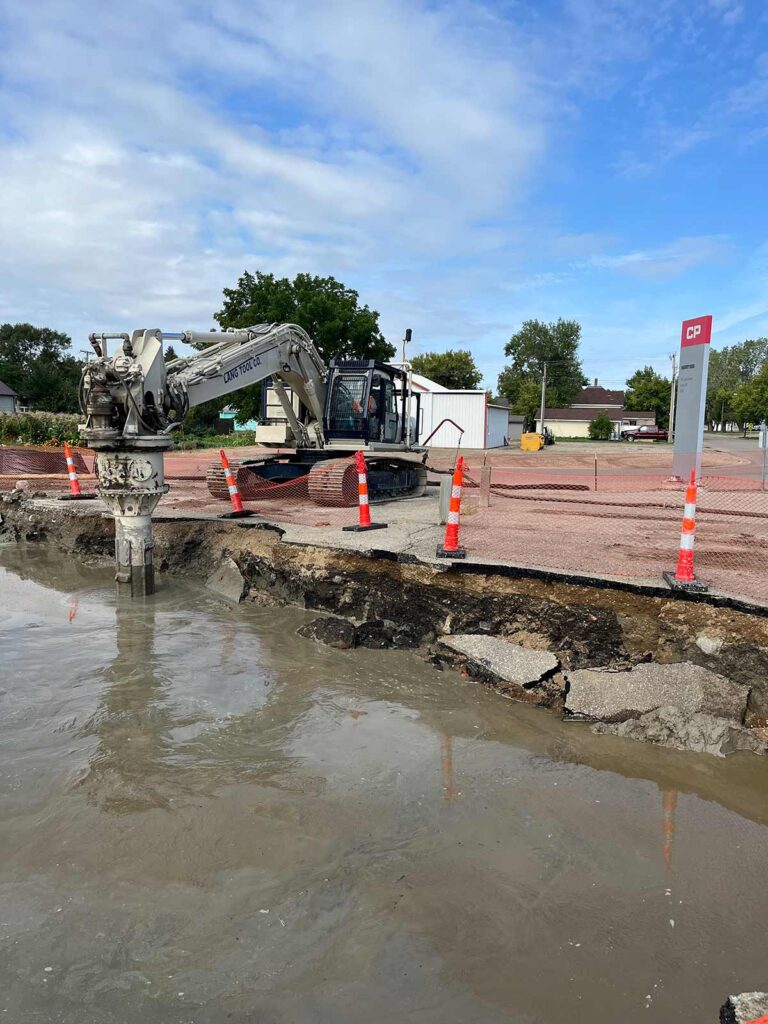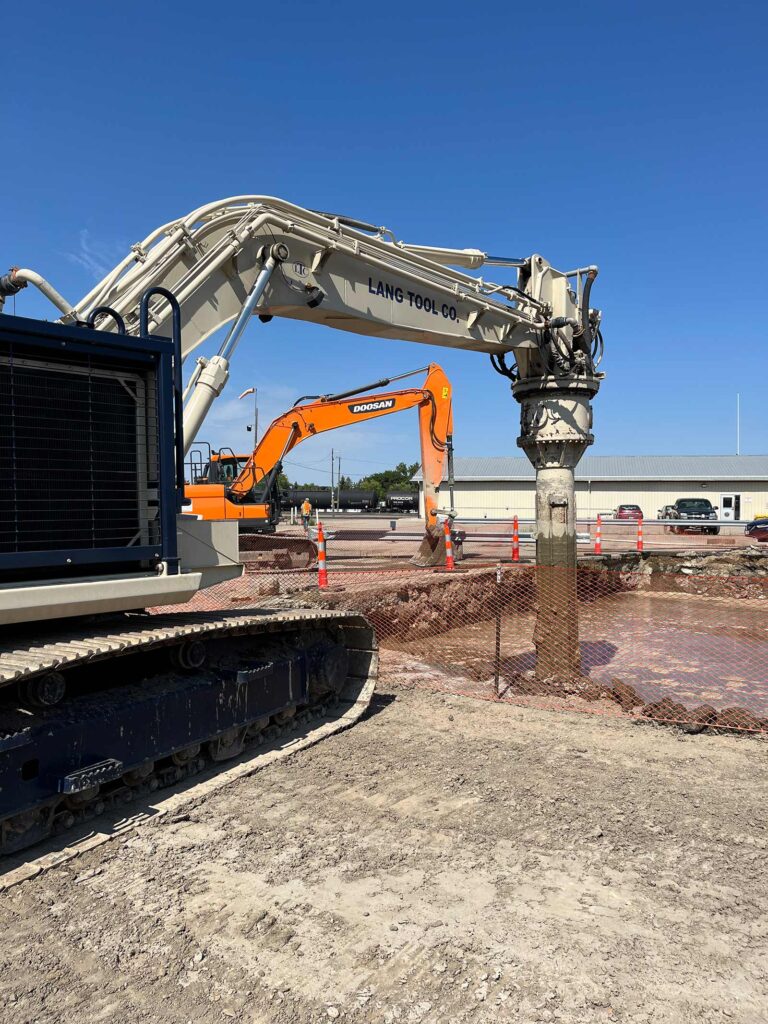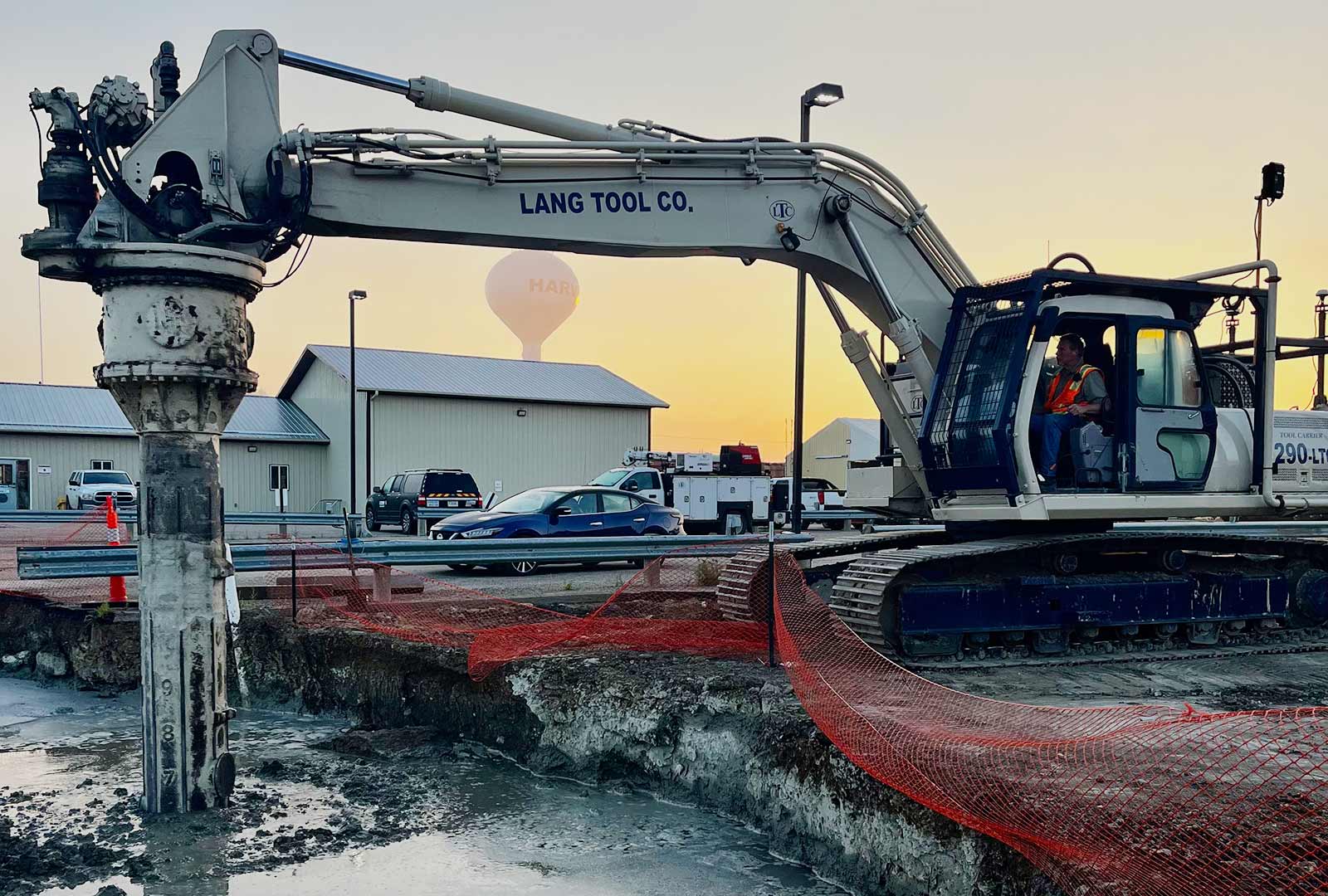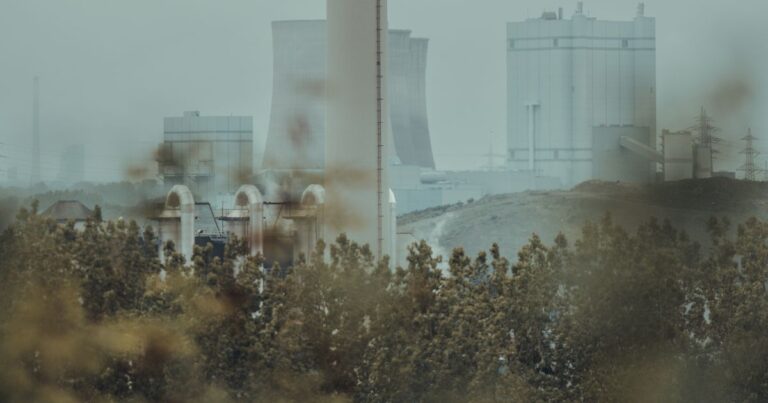In-Situ Solidification/Stabilization (ISS) and In-Situ Chemical Oxidation (ISCO)
In-Situ Soil Stabilization (ISS) and In-Situ Chemical Oxidation (ISCO) are forefront techniques in the environmental remediation sector.
ISS, often referred to as soil mixing or “soil blending” , focuses on enhancing soil properties by converting contaminants into their least soluble and least toxic forms. In-Situ Solidification modifies existing soil in construction sites, brownfield projects, and diverse environmental initiatives, aiming to improve soil strength, reduce permeability, and mitigate soil erosion risks.
In-Situ Chemical Oxidation, on the other hand, targets the chemical breakdown of contaminants in soil and groundwater using potent oxidizing agents. This method is particularly effective for treating organic compounds and specific pollutants, offering a comprehensive solution to various contamination challenges. At O6 Environmental, we harness the combined power of ISS and ISCO to deliver advanced and sustainable remediation outcomes.
Key Uses for ISS (In-Situ Solidification/Stabilization)
Heavy Metal Contamination
ISS is frequently applied to sites contaminated with heavy metals such as lead, arsenic, and chromium. The stabilizing agents immobilize these metals, reducing their mobility and bioavailability.
Organic Pollutants
ISS can be used to stabilize certain organic compounds, reducing their leachability and potential to spread.
Industrial Sites
Many industrial locations, especially older ones, have areas of contaminated soil. ISS can treat these zones without the need for extensive excavation.
Landfills
Especially in older or unlined landfills, ISS can be employed to solidify and stabilize hazardous wastes.
Brownfield Redevelopment
Brownfield sites, or previously developed lands that are not currently in use, often have contamination issues. ISS can treat these sites, making them safe for redevelopment.
Marine Sediments
In situations where dredging is not desirable or feasible, ISS can stabilize contaminants in marine sediments, reducing environmental and ecological risks.
Key Uses for In-Situ Chemical Oxidation (ISCO)
Chlorinated Solvents
ISCO is highly effective against chlorinated solvents like trichloroethylene (TCE), tetrachloroethylene (PCE), and dichloroethylene (DCE).
Petroleum Hydrocarbons
ISCO can be used to break down various petroleum products, including benzene, toluene, ethylbenzene, and xylene (collectively known as BTEX).
Pesticides and Herbicides
Certain pesticides and herbicides that are persistent in the environment can be treated using ISCO.
Dense Non-Aqueous Phase Liquids (DNAPLs)
These are heavier-than-water contaminants that can be challenging to treat. ISCO can be effective in oxidizing and breaking down DNAPLs in situ.
Groundwater Remediation
ISCO is often used to treat contaminated groundwater plumes, especially in sites where pump-and-treat methods might be less effective or more costly.
Soil Remediation
For soils contaminated with organic compounds, ISCO can be directly injected to achieve oxidation and pollutant breakdown.
The Treatment Method
The treatment method for In-Situ Soil Stabilization involves a meticulous process that transforms weak or problematic soil into a stable, durable, and less toxic material. Here's a simplified overview:
SOIL ASSESSMENT
Our experts analyze the soil’s composition, bearing capacity, and environmental conditions to determine the most suitable stabilization techniques.
STABILIZATION AGENTS
Depending on the project requirements, various agents such as cement, lime, or specialized binders are injected or mixed into the soil.
MECHANICAL MIXING
High-powered machinery is employed to mix and blend the soil and stabilizing agents thoroughly. This process ensures uniform distribution and chemical interaction.
Throughout the process, stringent quality control measures are implemented to ensure that the stabilized soil meets the desired engineering and environmental specifications.

Types of Equipment Used
In-Situ Soil Stabilization requires specialized equipment to efficiently blend the soil with stabilizing agents. Commonly used equipment includes:
Soil Blenders
These are large machines designed to mix soils with the stabilizing agents. They are equipped with powerful mixing tools that can penetrate deep into the soil, ensuring that the binding agent (like Portland cement) is distributed uniformly throughout the treated area.
Augers
Augers, or drilling rigs, are used to create boreholes where stabilizing agents can be injected or mixed directly with the contaminated soil. They can be of various sizes and configurations, depending on the depth and scale of the treatment area.
Bucket Mixing
This involves the use of excavators or backhoes with specially designed mixing buckets that combine the soil with the stabilizing agent. This method is particularly useful for smaller-scale projects or those with site-specific constraints.
Injection Wells
These are used to introduce oxidants like potassium or sodium permanganate into the subsurface. Depending on the project's requirements and the site's geology, both permanent and temporary wells can be employed.
Direct Push Technology
Direct push rigs allow for the injection of oxidants without the need for a traditional well. They use a hydraulic ram to advance a tool string, or probe, into the ground. Once at the desired depth, oxidants can be injected directly into the contaminated zone.
Benefits of In-Situ Soil Stabilization

In-Situ Soil Stabilization offers a plethora of benefits, making it a preferred choice for environmental remediation:
- Strength and Durability: Enhanced soil properties result in stronger foundations, longer-lasting structures, and reduced maintenance costs.
- Environmental Sustainability: Since In-Situ Soil Stabilization can be done onsite, it helps minimize the need for soil excavation and disposal which in turn reduces the carbon footprint associated with certain construction projects.
- Cost-Efficiency: Reduced material costs, shortened project timelines, and minimized waste disposal expenses translate to significant cost savings.
- Contaminant Remediation: It is a crucial tool for cleaning up contaminated soil, safeguarding ecosystems, and protecting human health.
- Versatility: In-Situ Soil Stabilization can be tailored to meet the specific requirements of diverse projects, from industrial facilities to residential developments.
Through our successful partnerships, we stay at the forefront of environmental remediation innovations. By collaborating with industry leaders, we provide tailored solutions that meet the specific needs of each project.
Call O6 For Your ISS/ISCO Needs

At O6 Environmental, our focus is on providing effective solutions to help achieve outstanding project outcomes. Contact us today to learn how O6 Environmental can provide a custom solution for your project’s specific needs.
Latest News

Environmental Remediation, Hazardous Waste
EPA Regulations Every Facility Manager Should Know in 2025In 2025, environmental compliance isn’t just about avoiding fines—it’s about operational resilience, corporate responsibility, and ...
Read Article What Is the Difference Between Environmental Remediation and Environmental Cleanup?
What Is the Difference Between Environmental Remediation and Environmental Cleanup?What Is the Difference Between Environmental Remediation and Environmental Cleanup? In the environmental services industry, ...
Read ArticleTell Us Your Challenge. We’re Here to Assist.
"*" indicates required fields